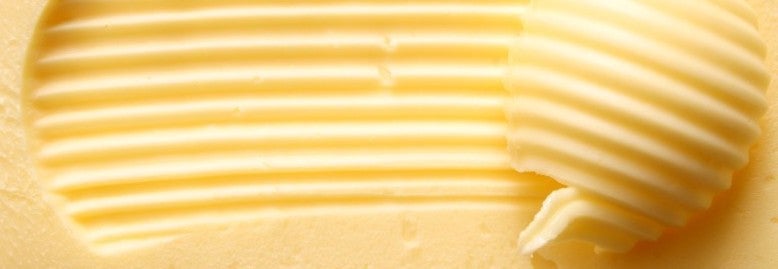
When you’re spreading butter on your morning toast, you probably don’t think about the process that goes behind making it. Although factory produced butter goes through a rigorous process, it is actually simple enough to make at home.
Factory butter
The standard butter you find in the supermarket is made using raw cow’s milk – and lots of it. Once the milk is delivered it will be pumped directly from the delivery truck into a machine called ‘the separator’. The separator spins, dividing the raw milk’s fat from the rest of the liquid. The fats are called ‘butter cream’ and are what’s used to create butter, while the liquid will be processed to create skim milk.
The butter cream is put in a bulk tank for 24 hours where it is pasteurised, and then transferred into a machine called ‘the churner’. The churner spins the butter, combining the fat molecules to form a clumpy pile of butter. As this happens, the butter separates itself from excess liquid known as butter milk – the milk used in ice cream. It’s in this churning stage when any flavour or salt is added. After churning for a little over an hour, the butter is finally finished. It’s then shaped and packaged ready for store shelves.
Homemade butter
If you’re like most, you probably don’t have a butter factory at home. But don’t fret, people made butter way before machines, and it’s easy enough for anyone to do.
What you will need
- Blender, food processer or jar with a lid
- Heavy whipping cream – at least 30% fat
- Salt (optional)
- Ice water
What to do
- Fill your blender, processor or jar half way with heavy whipping cream.
- Blend or shake the whipped cream. If you’re using a jar, put a marble in the cream to speed up the process.
- Half way through, add a pinch of salt. As a general rule, try one pinch of salt per cup of cream (optional).
- Once the contents are solid, your butter is ready to go. Pour off excess butter milk and scoop the butter into a bowl.
- Pour ice water over the butter to remove any remaining butter milk. Repeat this process until you’re satisfied with the consistency of your butter.


Share this article